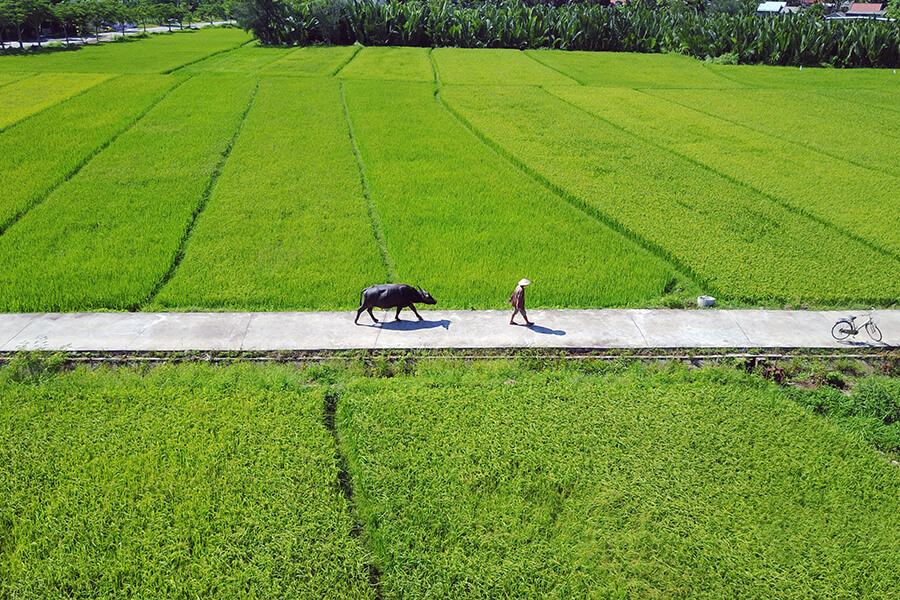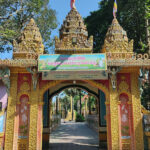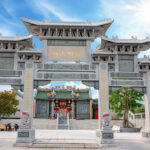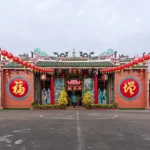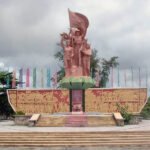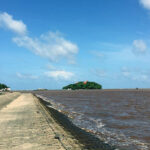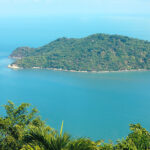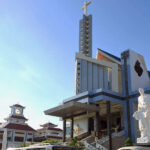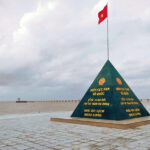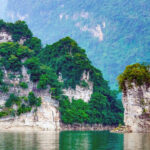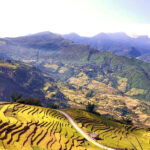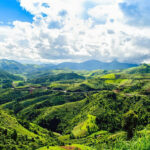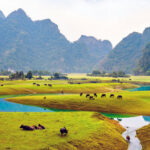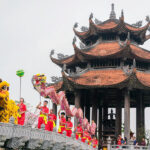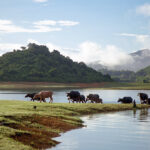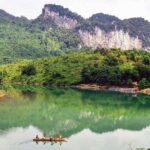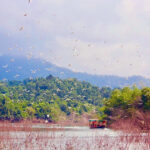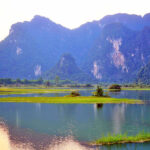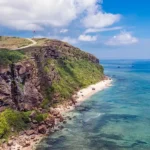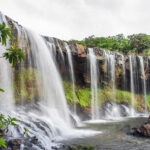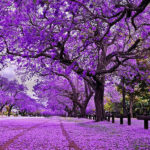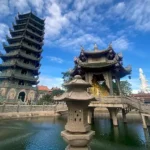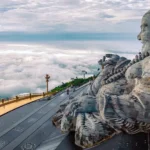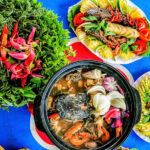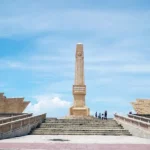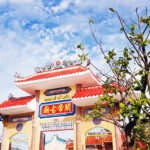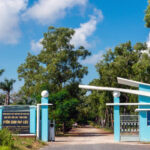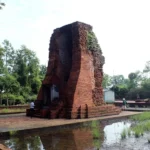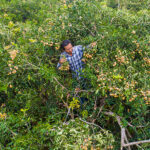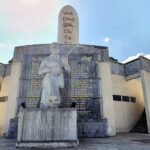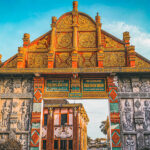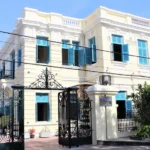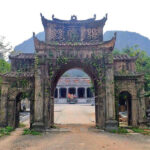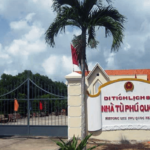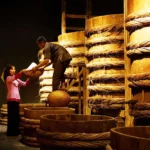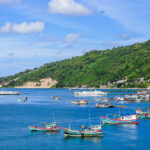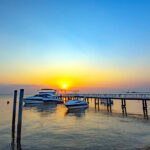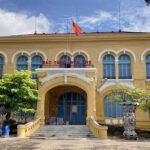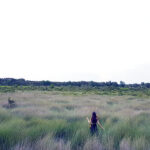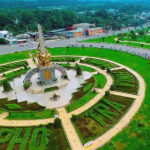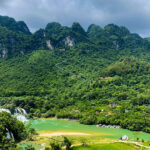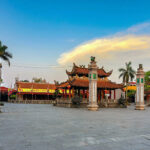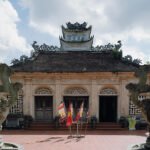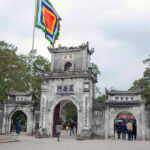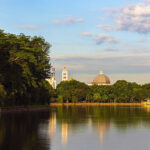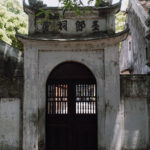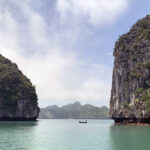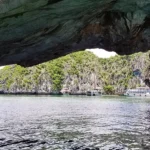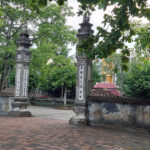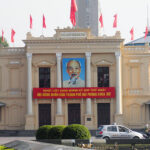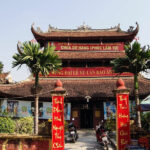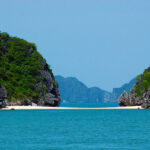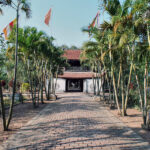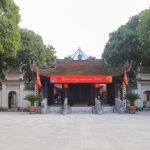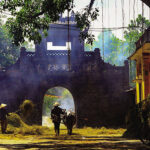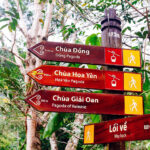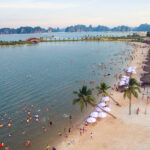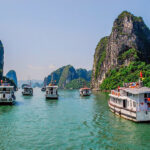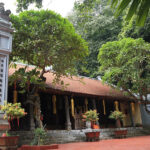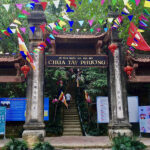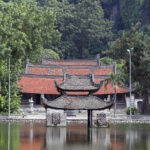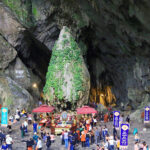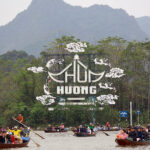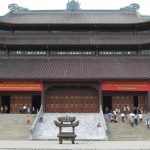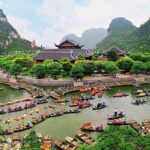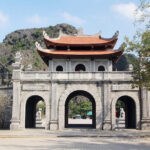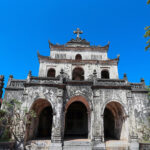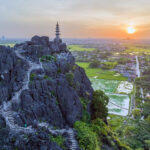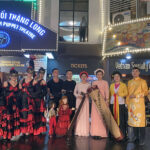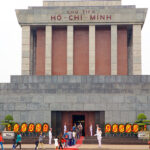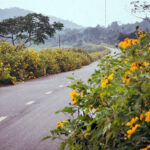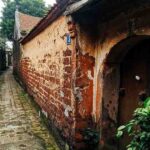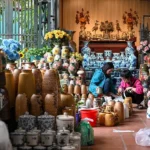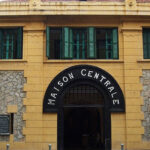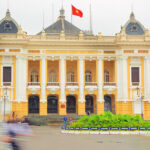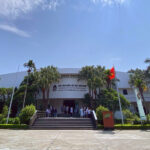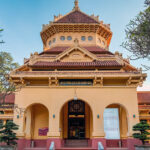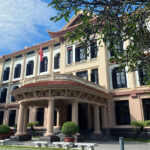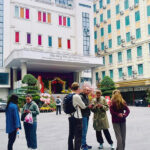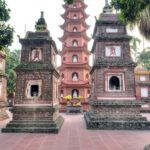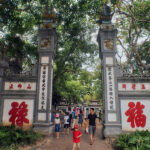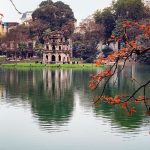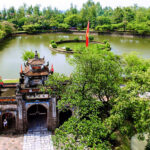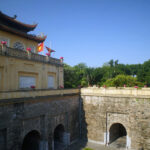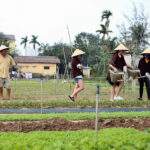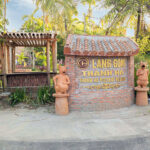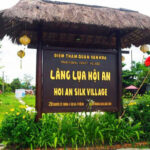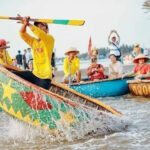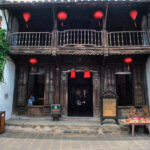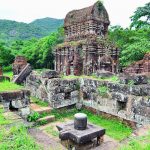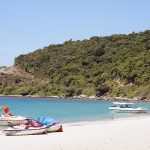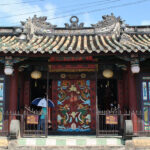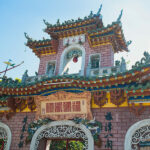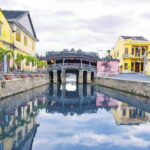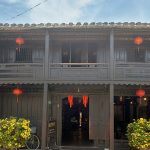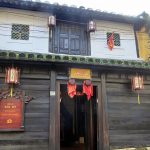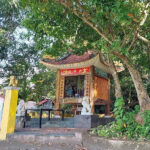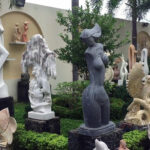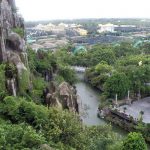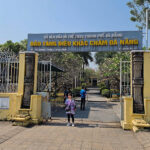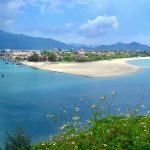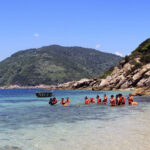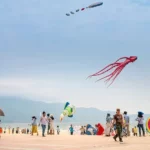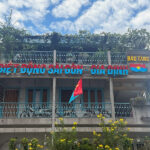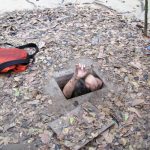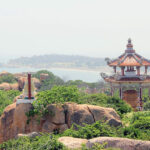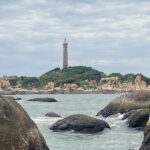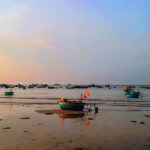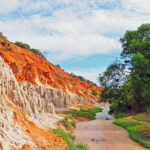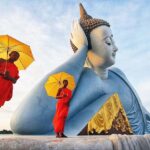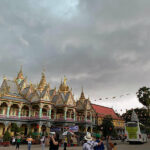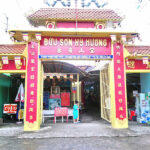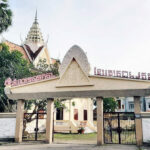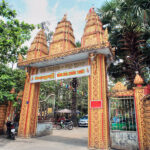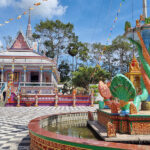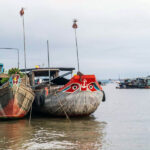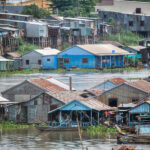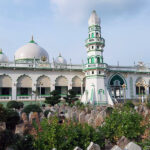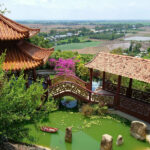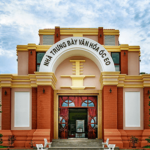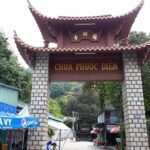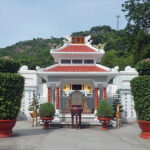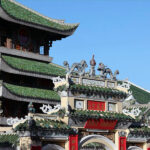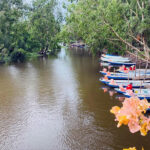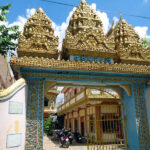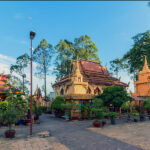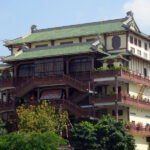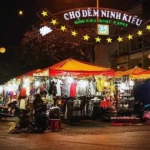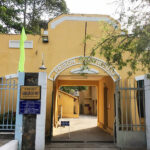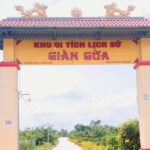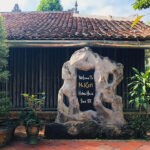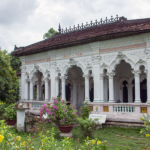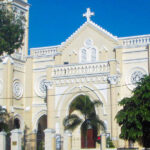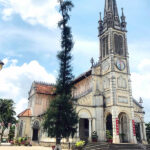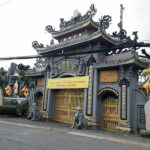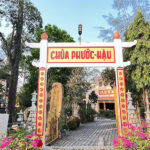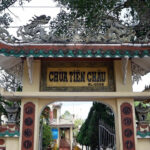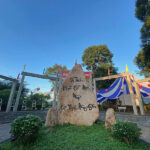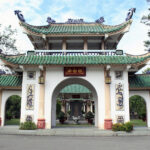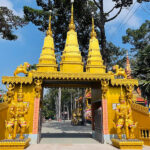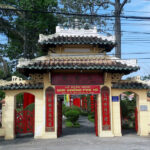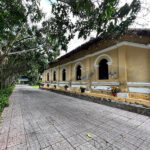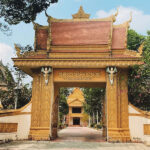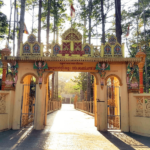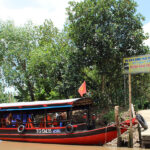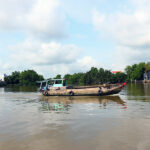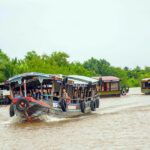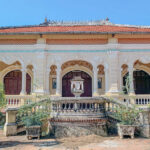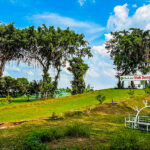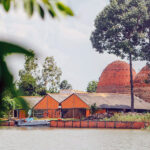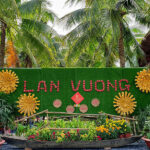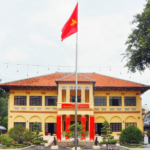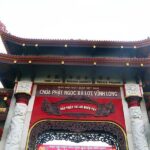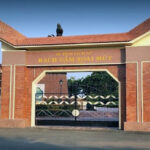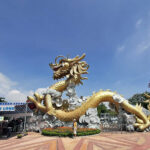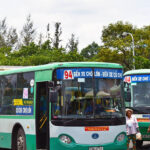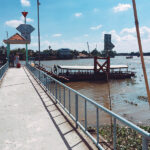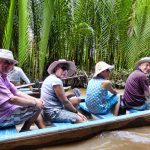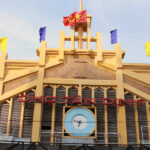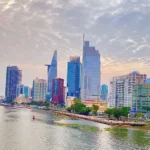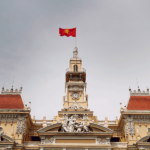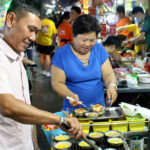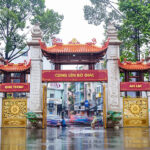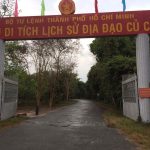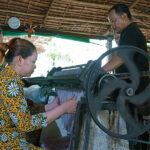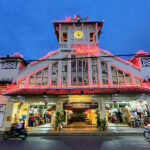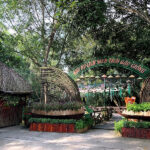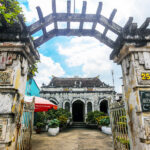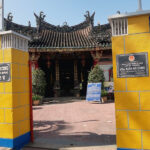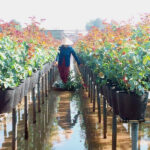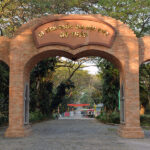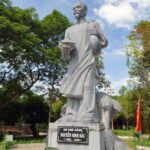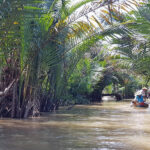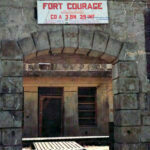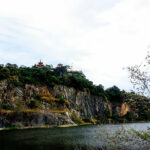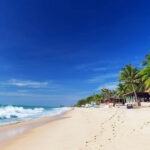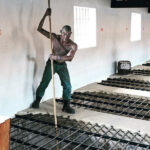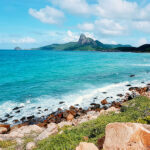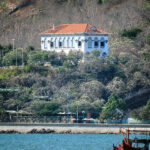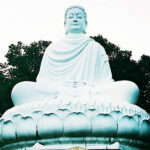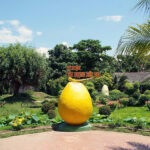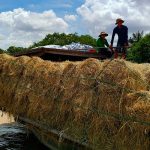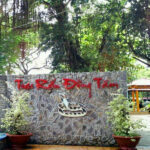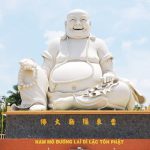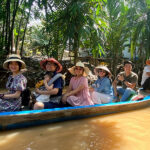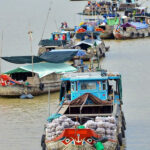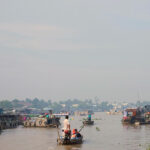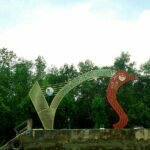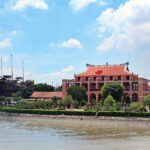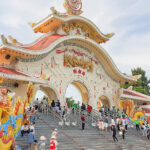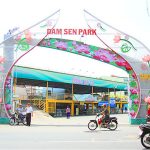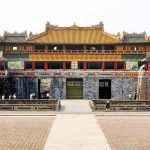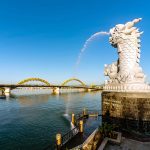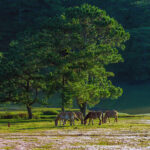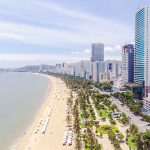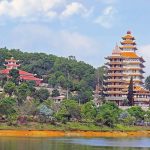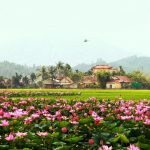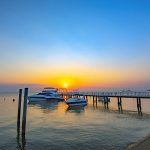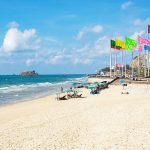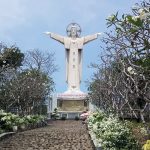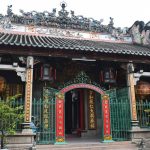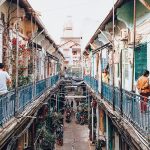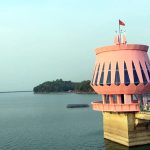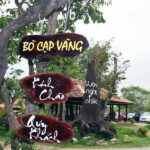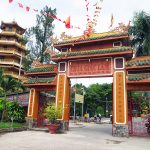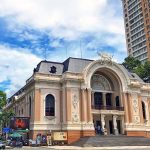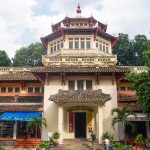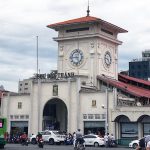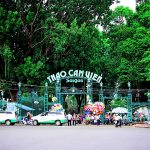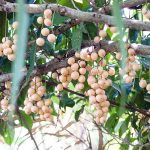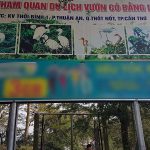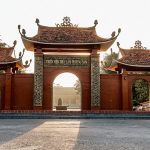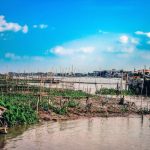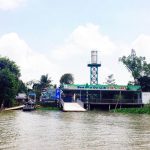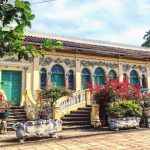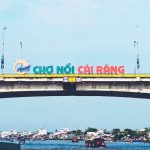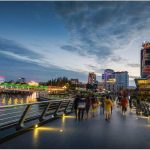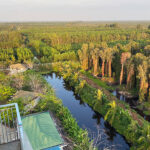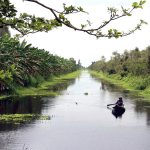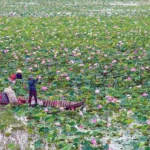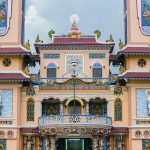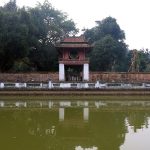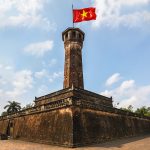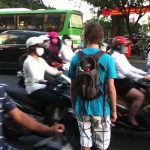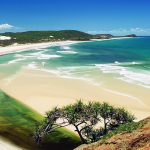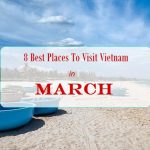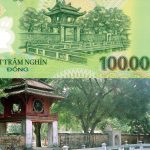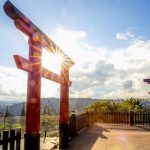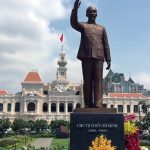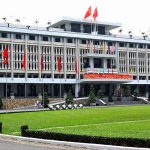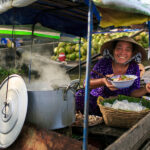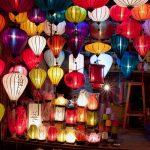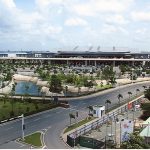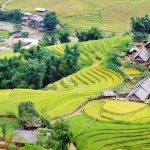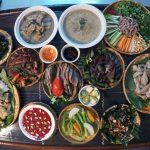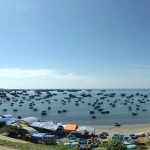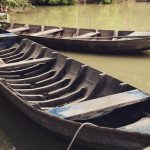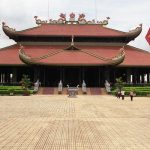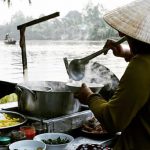Hoi An tourism is always ranked in the list of attractive places of Vietnam, not only domestic tourists but international tourists are also very impressed with the beauty of the old town along with the cultural interference of many nations around the world. In addition to cultural values through diverse architectures, the town also preserves countless intangible cultural foundations. Coming to explore Hoi An, tourist can admire the daily life of residents with customs, religious activities, folk art, cultural festivals …all being well preserved make Hoi An more and more attractive.
Table of Contents
What is the best time to explore Hoi An?
Hoi An’s climate is a mix of climate between the South and the North, characterized by the tropical monsoon climate with humidity and divided into two distinct rainy and dry seasons. Each season, the old town has its own beauty.
The first three months of the year are the most ideal time to roam in Hoi An when the sun is not too harsh, the weather is cool, and there is occasional light rain.
From April to June is the harsh period of the dry season, but Hoi An’s weather is quite pleasant, due to its location in the south of the Truong Son range. This is also the peak tourist season.
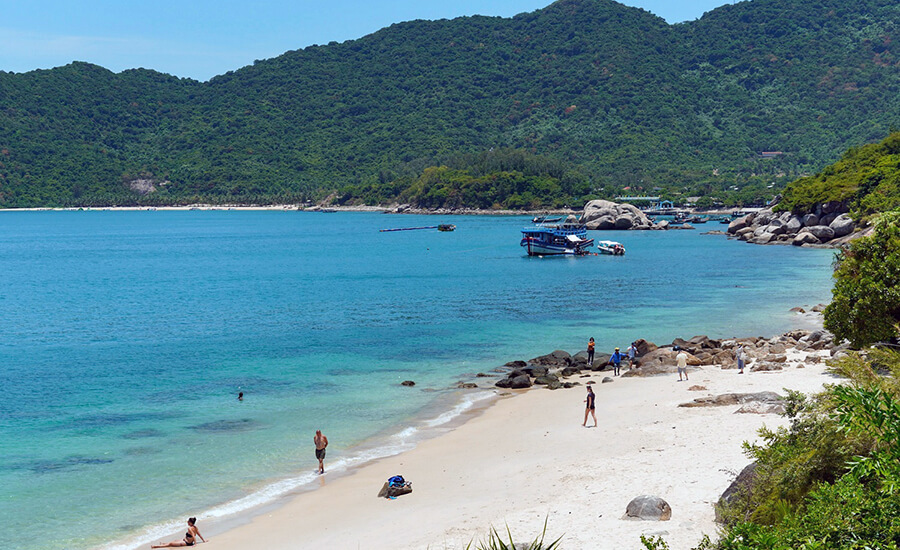
Cham islet
July is still the dry season. August and September is the season change time. The weather is still sunny, starting to rain sporadically and it will be chilly at night.
The last three months of the year are the rainy season in Hoi An, it is rarely sunny, it rains heavily and sometimes there are floods. Tourists from the South coming to Hoi An in the cold season should prepare appropriate clothing to avoid affecting their health.
How to get here?
Not only domestic airlines such as Vietnam Airlines, Vietjet Air, Bamboo Airlines… but also international airlines operate flights to Da Nang. Arriving at Da Nang airport, you can choose to take a shuttle bus from the airport, or take a local bus, taxi, or private car to Hoi An center.
For travelers inside Vietnam, besides planes, there are quite a variety of means of transport to Hoi An. You can choose the following transportation methods:
- Train: to explore Hoi An by train departing from Ho Chi Minh City/Hanoi and stopping at Da Nang or Tra Kieu station (Quang Nam). Travel time takes about 15 – 20 hours with ticket prices from 700,000 – 1,200,000 VND/way, depending on the itinerary and seat type.
- Tourist bus: you can go to Hoi An by bus routes running from Ho Chi Minh City – Hoi An, Hanoi – Hoi An with ticket prices from 500,000 – 800,000 VND/way.
- Self-driving is also an interesting choices if you are a genuine backpacker or live in provinces neighboring Hoi An such as Da Nang, Quang Ngai,…
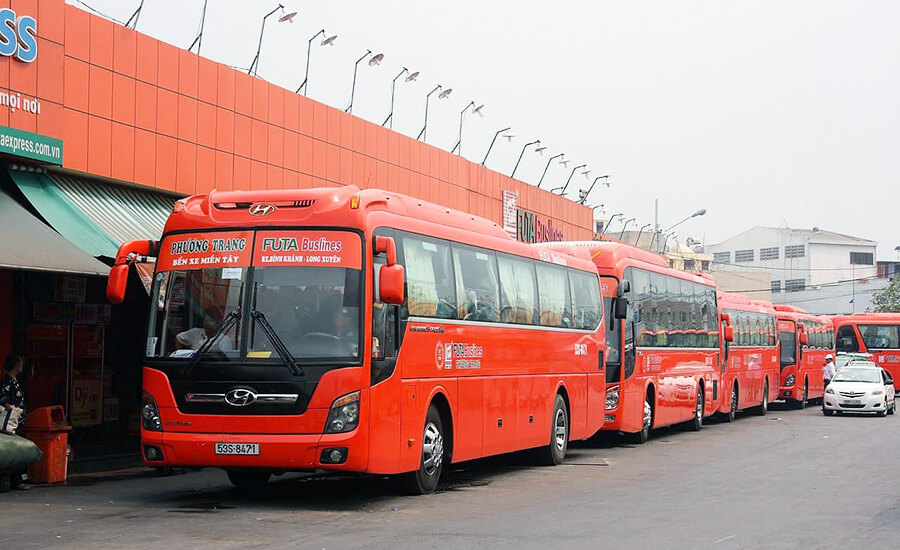
Futa bus – one of the famous bus company to Hoi An
What to see in Hoi An?
Hoi An has many beautiful famous tourist attractions both inside and outside the old town. Each destination has its own charm that you should not miss. In this article, I will introduce in detail the most beautiful and outstanding places in Hoi An, some of them quite new but really attractive.
Tan Ky ancient house
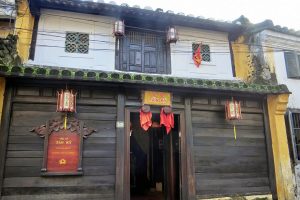 Built in 1741, this is the oldest house in Hoi An. It was named “Tan Ky” as the second generation of house, the residence of the Le family, hoping that would bring them wealth. Until now, the house is still being fully preserved the unique architectural features as well as the ancient beauty from the time it was built. Some of the special architectural works are included two vertical panels which inscribed by parallel sentences; many ancient artifacts and sailboats – the symboled of Hoi An Port many centuries ago; unique horizontal lacquered boards…
Built in 1741, this is the oldest house in Hoi An. It was named “Tan Ky” as the second generation of house, the residence of the Le family, hoping that would bring them wealth. Until now, the house is still being fully preserved the unique architectural features as well as the ancient beauty from the time it was built. Some of the special architectural works are included two vertical panels which inscribed by parallel sentences; many ancient artifacts and sailboats – the symboled of Hoi An Port many centuries ago; unique horizontal lacquered boards…
Furthermore, coming to visit Tan Ky ancient house, tourists will have the opportunity to ascertain much more about typical architectures which is a convergence of 3 cultural regions of Vietnam – Japan – China with unique and rare motifs.
Address: 101 Nguyen Thai Hoc, Minh An Ward, Hoi An.
Phung Hung ancient house
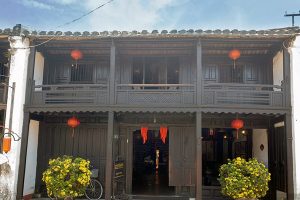 The Phung Hung ancient house, Hoi An was built in the year 1780. This is the house of the Vietnamese merchant in Hoi An. He named the house “Phung Hung”, meaning “Flourish” with the desire to be always successful.
The Phung Hung ancient house, Hoi An was built in the year 1780. This is the house of the Vietnamese merchant in Hoi An. He named the house “Phung Hung”, meaning “Flourish” with the desire to be always successful.
Phung Hung ancient house was designed according to the model of a popular merchant house in the early 19th century with the unique blending of Vietnamese, Japanese, and Chinese architectural styles. The materials are mainly rare woods that still retain their original beauty today.
The house was built in the midst of lively trade integration and is one of the signs for the prosperous period of Hoi An trading port. Phung Hung was ranked as a “National Historical and Cultural Site” in 1993.
Address: 04 Nguyen Thi Minh Khai, Minh An Ward, Hoi An.
Japanese Covered Bridge
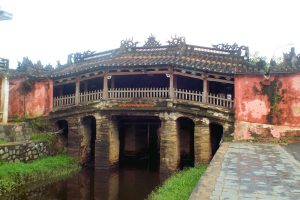 The Japanese Covered Bridge, also called the Pagoda Bridge, was built in the 16th century and is still incredibly well-preserved. The pagoda and bridge are made of lacquered wood with elaborate carvings. On the northern side of the bridge is a Japanese pagoda dedicated to the God of weather to protect sailors. There are statues of two dogs located at the western end of the bridge and two monkeys at the eastern end. Although it is called a pagoda, there is no Buddha image inside. The middle part is worshiped a wooden statue of Bac De Tran Vo – the guardian deity of the country, giving people joy and happiness.
The Japanese Covered Bridge, also called the Pagoda Bridge, was built in the 16th century and is still incredibly well-preserved. The pagoda and bridge are made of lacquered wood with elaborate carvings. On the northern side of the bridge is a Japanese pagoda dedicated to the God of weather to protect sailors. There are statues of two dogs located at the western end of the bridge and two monkeys at the eastern end. Although it is called a pagoda, there is no Buddha image inside. The middle part is worshiped a wooden statue of Bac De Tran Vo – the guardian deity of the country, giving people joy and happiness.
The Japanese Covered Bridge has been restored many times but still retains the architectural imprints with typical Hoi An cultural imprints. And today, the bridge stands as a symbol of the old town.
Assembly Hall of Fujian Chinese
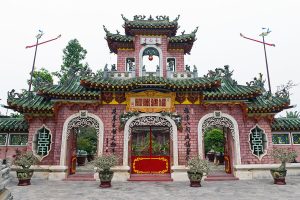 The Assembly Hall of Fujian Chinese was built in 1697 by members of the local Fujian community. It was constructed according to the Chinese character. The main hall is dedicated to the sea Goddess Thien Hau who rests alongside the goddess are Thuan Phong Nhi who has ears to hear the sound of the wind and Thien Ly Nhan who has eyes to see thousands of miles away. Many ancient objects still remain inside include statues, bronze drums, bronze bells and horizontal lacquered board engraved with Chinese characters.
The Assembly Hall of Fujian Chinese was built in 1697 by members of the local Fujian community. It was constructed according to the Chinese character. The main hall is dedicated to the sea Goddess Thien Hau who rests alongside the goddess are Thuan Phong Nhi who has ears to hear the sound of the wind and Thien Ly Nhan who has eyes to see thousands of miles away. Many ancient objects still remain inside include statues, bronze drums, bronze bells and horizontal lacquered board engraved with Chinese characters.
In addition to its architecture, many events and activities take place, followed the lunar calendar, on January 15, February 2, February 16, March 23 … attract a lot of domestic and foreign tourists to participate.
Address: 46 Tran Phu Street, Cam Chau, Hoi An.
Quan Cong temple
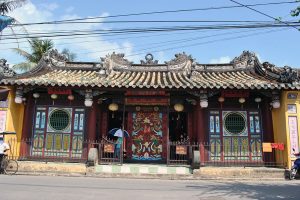 The Quan Cong temple was built in 1653, it was dedicated to Guan Yu (also know as Lord Guan), a general in the three-kingdom period of ancient China who was a model of loyalty to the king and a dutiful son to his parents. Quan Cong temple was constructed according to the Chaozhou – China character with many houses linked together by rafters. The roof covered with colorful glazed pip-shaped tiles. They are also decorated with colorful porcelain lemon trees flowers, dragons, and small lions.
The Quan Cong temple was built in 1653, it was dedicated to Guan Yu (also know as Lord Guan), a general in the three-kingdom period of ancient China who was a model of loyalty to the king and a dutiful son to his parents. Quan Cong temple was constructed according to the Chaozhou – China character with many houses linked together by rafters. The roof covered with colorful glazed pip-shaped tiles. They are also decorated with colorful porcelain lemon trees flowers, dragons, and small lions.
The main hall has a statue of Guan Yu wearing a dragon-embroidered robe with a dignified face, sharp and bright eyes ahead. Besides, there are two statues of Guan Ping and Zhou Cang – the loyal and sacrificial guardian and servant of Guan Yu General. Two sides of the main altar are worshipped two horses: the white horse on the left and Red Hare on the right – which had accompanied Guan Yu in many life-to-death battles.
Address: 24 Tran Phu, Cam Chau, Hoi An.
Cua Dai Beach
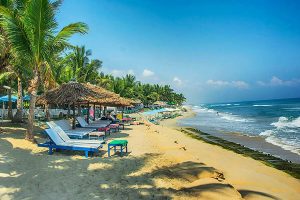 Cua Dai Beach is not far from Hoi An center (about 5 km), located in the territory of Hoi An city, Quang Nam province. The beach has a gentle and charming white sand, clear and blue water, moderate slopes and small waves which make it ideal for relaxing and enjoy recreational activities. Another impressive things in Cua Dai is the rows of coconut trees stretching, soaring in the sea breeze.
Cua Dai Beach is not far from Hoi An center (about 5 km), located in the territory of Hoi An city, Quang Nam province. The beach has a gentle and charming white sand, clear and blue water, moderate slopes and small waves which make it ideal for relaxing and enjoy recreational activities. Another impressive things in Cua Dai is the rows of coconut trees stretching, soaring in the sea breeze.
Although this beauty has been somewhat reduced with white sandbags blocking the waves, this place is still suitable for walking and enjoying the cool air in the late afternoons.
Cham islet
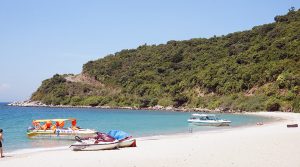 The Cham islet, approximately 20 km from Hoi An town, in the East Sea. Covering an area of 15km2, this archipelago includes 8 islets: Hon Lao (also known as Cu Lao island, the largest), Hon Kho Me, Hon Kho Con, Hon La, Hon Dai, Hon Mo, Hon Tai, Hon Ong. The population on these islets are about 3,000 people. The islet has preserved many architectural constructions, belonging to Sa Huynh, Cham Pa, Dai Viet cultures, which date several hundred years. The islet is also a tourist destination with a cool year-round climate, rich flora and fauna.
The Cham islet, approximately 20 km from Hoi An town, in the East Sea. Covering an area of 15km2, this archipelago includes 8 islets: Hon Lao (also known as Cu Lao island, the largest), Hon Kho Me, Hon Kho Con, Hon La, Hon Dai, Hon Mo, Hon Tai, Hon Ong. The population on these islets are about 3,000 people. The islet has preserved many architectural constructions, belonging to Sa Huynh, Cham Pa, Dai Viet cultures, which date several hundred years. The islet is also a tourist destination with a cool year-round climate, rich flora and fauna.
Bringing in its wild beauty, the islands quickly become an attractive destination, offering many activities such as fishing, camping, scuba diving, take a canoeing trip to visit other islets nearby.
My Son Holy Land
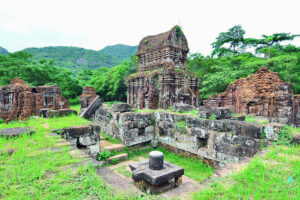 My Son Holy Land is located in Duy Phu commune, Duy Xuyen district, Quang Nam province, about 40 km away from the ancient town of Hoi An, in a valley about 2 km in diameter, surrounded by hills. The temples constructed between the 4th and the 14th century by the Kings of Champa. Beside the ceremonial function, My Son was also the cultural and religious center of the Champa dynasties and the burial place of many kings, Cham royalty and national heroes. The sanctuary was a complex construction, including many difference temples and numerous stele in varios architectural styles.
My Son Holy Land is located in Duy Phu commune, Duy Xuyen district, Quang Nam province, about 40 km away from the ancient town of Hoi An, in a valley about 2 km in diameter, surrounded by hills. The temples constructed between the 4th and the 14th century by the Kings of Champa. Beside the ceremonial function, My Son was also the cultural and religious center of the Champa dynasties and the burial place of many kings, Cham royalty and national heroes. The sanctuary was a complex construction, including many difference temples and numerous stele in varios architectural styles.

Follow the French research, there were 70 temples in here. And now, there are only 20 temples that still remain almost intact. The rest have been destroied and reduced to ruin by the ward and time. However, it is still the most important sanctuary of the Cham people and holds a very important position in the art and culture of Southeast Asia.
In 1999, My Son relic was recognized as a World Cultural Heritage Site by UNESCO because this heritage is a typical example of the gift of cultural heritage. cultural change and is the only evidence of Asian civilization has disappeared.
Thanh Ha Pottery Village
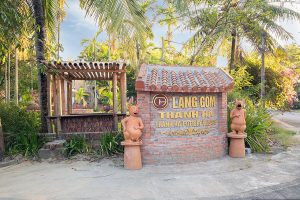 Thanh Ha pottery village dates back to the late 15th century, located about 3 km west of Hoi An ancient town, right next to the Thu Bon river. The area is a pretty small but extremely peaceful village.
Thanh Ha pottery village dates back to the late 15th century, located about 3 km west of Hoi An ancient town, right next to the Thu Bon river. The area is a pretty small but extremely peaceful village.
This pottery village is specializing in the manufacturing of popular products to serve daily use such as cups, bowls, vases, pots, bricks, tiles, dishes and many unique souvenirs which made by skill-hands and decorated with attractive colours.
Over the past five centuries, local potters have kept their traditional method of making pottery – hand made and wheel thrown that attract many people come to visit and practice.
An Bang Beach
 An Bang Beach is a located in Cam An ward of the ancient city of Hoi An, where it still retains its pristine and pure beauty, stark contrast to the vibrant and bustling Cua Dai beach. Although the beach is a new tourist spot, many people including the locals and tourists have flocked to here, since the recent erosion at Cua Dai Beach. The beach at An Bang is pretty well managed, very clean, and spacious. It’s not only a good place to relax, sunbathing, swim, or fishing but you can also find jet skis and parasailing on offer.
An Bang Beach is a located in Cam An ward of the ancient city of Hoi An, where it still retains its pristine and pure beauty, stark contrast to the vibrant and bustling Cua Dai beach. Although the beach is a new tourist spot, many people including the locals and tourists have flocked to here, since the recent erosion at Cua Dai Beach. The beach at An Bang is pretty well managed, very clean, and spacious. It’s not only a good place to relax, sunbathing, swim, or fishing but you can also find jet skis and parasailing on offer.
Furthermore, many people prefer to cycling along the beach to visit Tra Que village or boating explore Cham islet, from An Bang beach.
Museum of Trade Ceramics
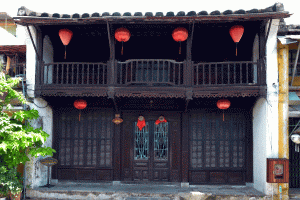 The museum was formerly an old house, built in the 19th century. Museum of Trade Ceramics has been keeping over 430 ceramic artifacts, such as dishes, wine cups, vases, teapots…, dating from the 8th to 18th centuries. Most of the artifacts are trading ceramics originating from the Middle East, India, China, Japan, Thailand, Vietnam… which shows the international cultural-economic exchange relationship had strongly taken place in Hoi An.
The museum was formerly an old house, built in the 19th century. Museum of Trade Ceramics has been keeping over 430 ceramic artifacts, such as dishes, wine cups, vases, teapots…, dating from the 8th to 18th centuries. Most of the artifacts are trading ceramics originating from the Middle East, India, China, Japan, Thailand, Vietnam… which shows the international cultural-economic exchange relationship had strongly taken place in Hoi An.
In addition, there are many samples of parts of the old trading ships that brought merchants around the world to this seaport which are preserved intactly. In particular, there are numerous handicraft items of traditional villages are being sold here.
Address: 80 Tran Phu, Minh An, Hoi An.
Bay Mau nipa palm forest
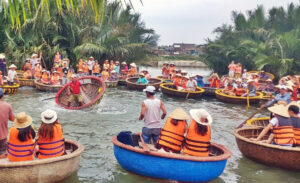
From the center of Hoi An ancient town, along the Hoai River bank for more than 3 km is the Bay Mau nipa palm forest of more than ten hectares, in Cam Thanh commune.
The basket boat rowing service to transport passengers to visit the coconut forest has appeared in Cam Thanh in recent years and has gradually become an indispensable “specialty” of Hoi An tourism. Each boat is only allowed to carry a maximum of two people.
 To visit the nipa palm forest, each guest pays 200,000 VND to sit in a basket boat, weaving through the creeks, flanked by green coconut forests for about an hour.
To visit the nipa palm forest, each guest pays 200,000 VND to sit in a basket boat, weaving through the creeks, flanked by green coconut forests for about an hour.
In addition to riding the basket boat, visitors can also watch boat dance performances and instructions on how to make beautiful small toys from nipa palm leaves such as flowers, locusts, bracelets, glasses, rings, or hats… as souvenir. If you come to Bay Mau in the 8th lunar month, you will enjoy ripe water coconuts with crispy and sweet pulp.
Tra Que Vegetable Village
 Tra Que Vegetable Village is located in Cam Ha Commune, Hoi An City, about 3km northwest of Hoi An center with an area of over 40 hectares, with households here rotating and intercropping more than 20 types of leafy vegetables and spices. with a tradition of nearly 400 years.
Tra Que Vegetable Village is located in Cam Ha Commune, Hoi An City, about 3km northwest of Hoi An center with an area of over 40 hectares, with households here rotating and intercropping more than 20 types of leafy vegetables and spices. with a tradition of nearly 400 years.
Tra Que has more than 40 types of vegetables, among which herbs are prominent. It’s still onions, laksa leaves, perilla, basil, and coriander, but Tra Que vegetables are fragrant and have a unique flavor that is unmistakable.
It is worth mentioning, coming to Tra Que not only to admire the scenery and watch people grow vegetables, but also to interact with farmers to experience how to care for, water vegetables, harvest… In addition, guests can cycle around the roads around this vegetable village to enjoy the cool, joyful atmosphere in this 18-hectare vegetable field.
Things to do in Hoi An
Cycling in Hoi An
Biking is the perfect way to explore Hoi An. The excursions will give you the chance to really get up close to the local and see how they live. The best sights and experiences are often found down obscure side streets, alleyways, cycling through rice paddies and traditional villages or river views.
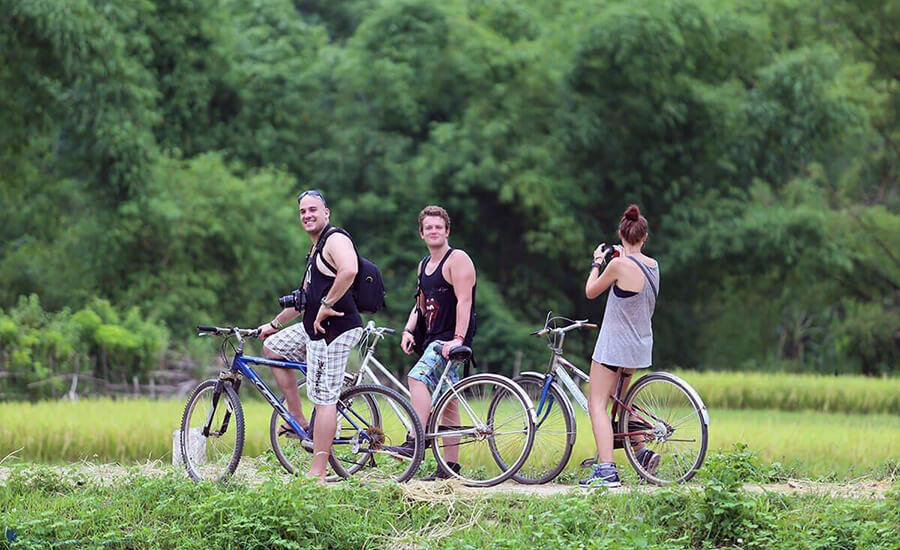
Currently, there are many tourist agents offers tourist from a half day to full day cycling trip to some best place such as Cam Kim Island, Tra Que Vegetable Village, Hoi An Town, An Bang Beach, My Son Sanctuary…
Boating along the river
Cruising along a river is one of the most popular activities in Hoi An. A trip would help you indulge in the beautiful surrounding landscape and witness the rural life where local people live on the bank of the river with corn, peanut growing or duck raising, and using bamboo boat as their main transportation.
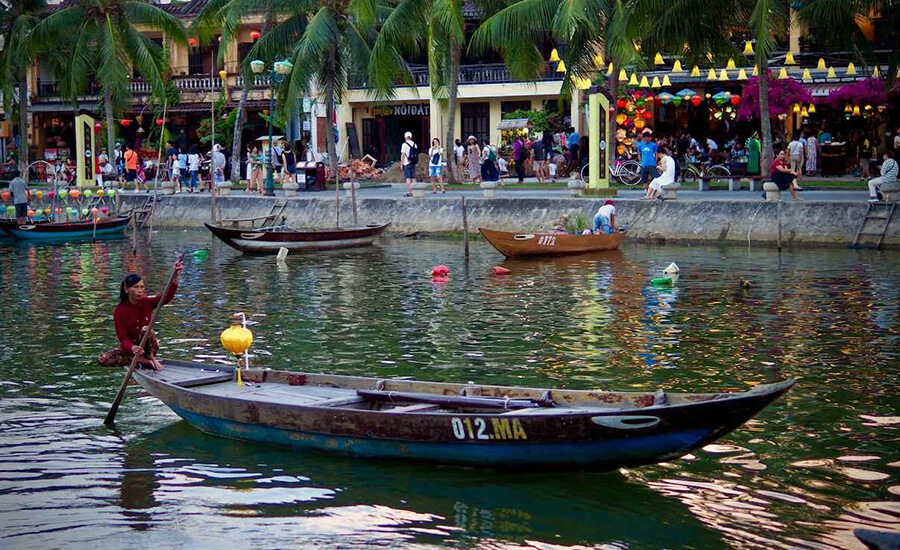
It would be so much fun to see local fisherman rowing a boat with a fishing net to catch fish. This is also an idea way to visit the handicraft villages, discover the local people daily activities during the excursion.
Cooking Classes
Cooking classess in Hoi An do not just give you the idea how to cook some Vietnamese dishes. The most basic experiences will guide you visit local market, choosing and then buying ingredients, learning about their special food from your host, choosing some dishes and cooking it.
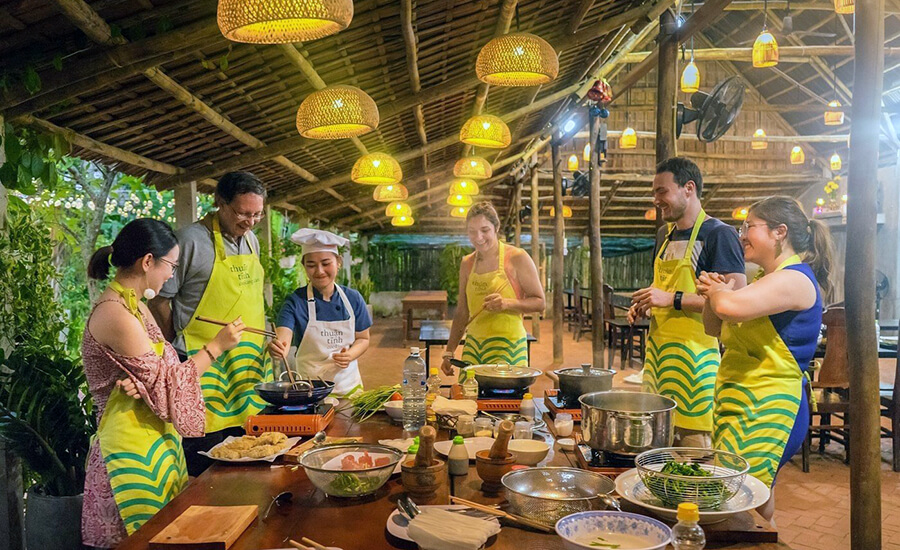
Of course, you also enjoy the results of your endeavours. However, some of the the booking classes in Hoi An will still include the above but there are experiences to visit local farm, selecting fresh ingredients from here and use it later to cook. Even more, you also have a chance to practice what the famers daily doing in their land such as fertilizing, preparing the soil, planting the herbs, watering and hoeing the vegetable beds…by simple tools or hand.
Visit night market
The night markets in Hoi An are not really famous or crowded like other markets in Da Lat, Dam Market in Nha Trang, Ben Thanh Market in Ho Chi Minh, Old Quater Market in Ha Noi….but it has many unique features. The markets offer many type of souvenirs, clothes, jewellery and especially lanterns with all shapes, sizes and hues.
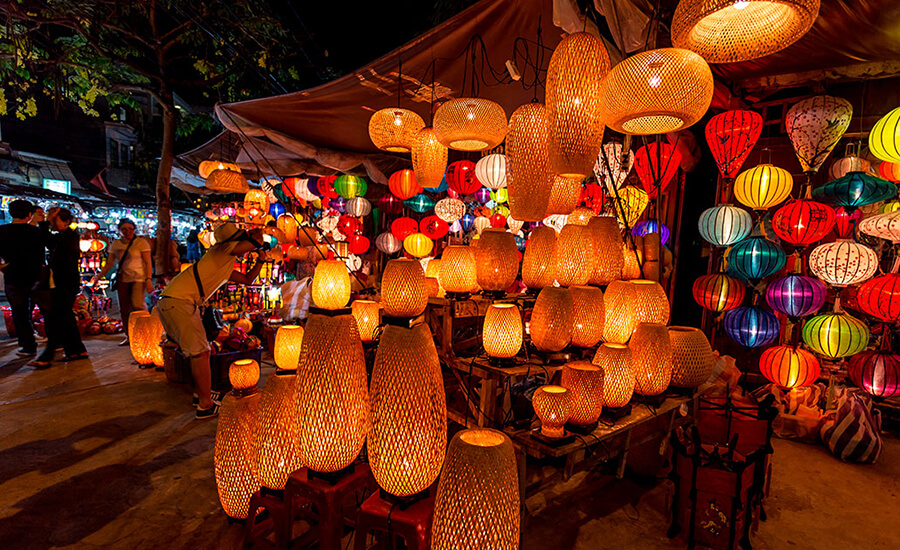
Although it is a market, this place is not only for trading activities, but also an attractive spot for many people to visit, enjoy the rustic dishes, and various folk games – one of the indispensable experiences on these markets.
What to eat in Hoi An?
Not only attracting tourists with its ancient and peaceful beauty, Hoi An specialties are also highlights that visitors should not miss when coming here.
Cao Lau
Cao Lau Hoi An is an extremely attractive specialty dish. This dish looks quite similar to Quang noodles, but the fibers are chewier, and the sauce is also unique, rich, and full of flavor.
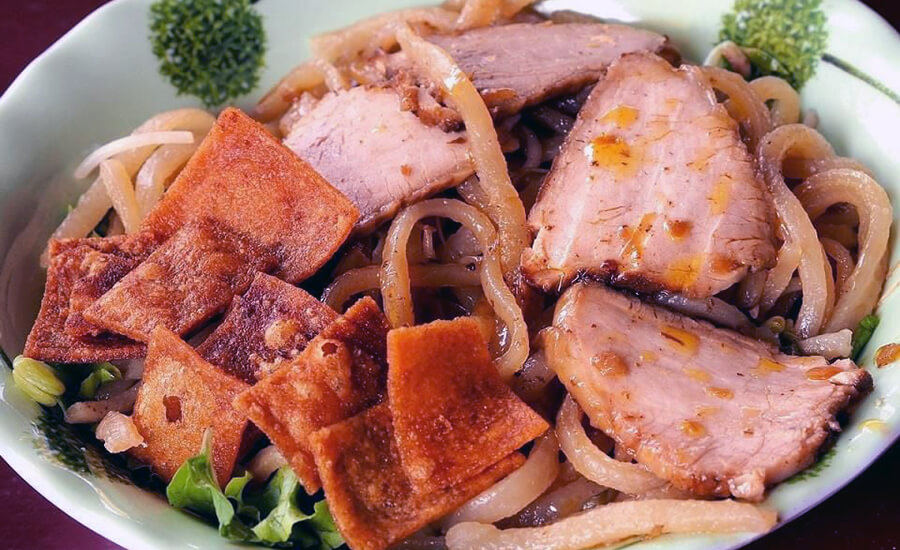
Hoi An chicken rice
According to Hoi An travel experiences of gourmet tourists, chicken rice is a dish you must try when coming to Hoi An. Because the Hoi An chicken rice recipe is very different, the rice is soft and fragrant, the chicken is firm and chewy, eaten with extremely “flattering” black pepper sauce.
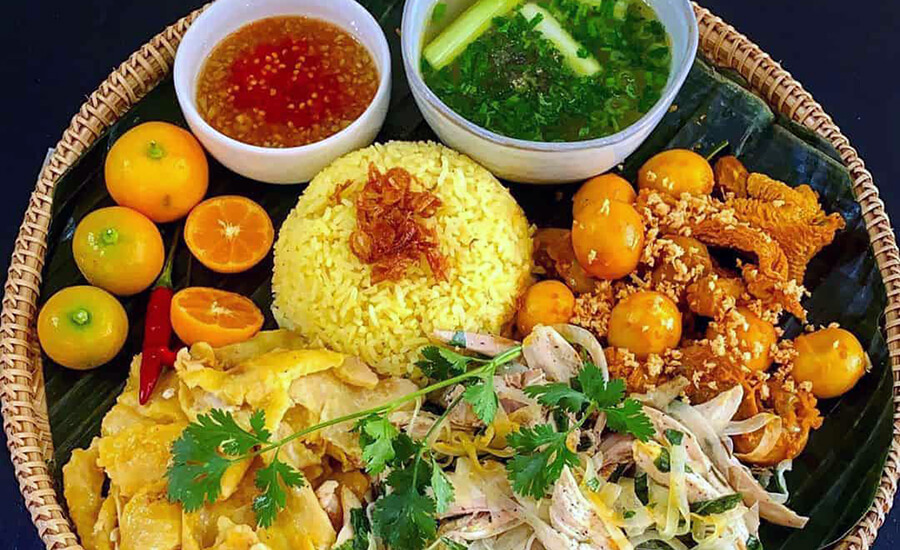
Sweet soup
What to eat in Hoi An? You definitely cannot miss the sweet soup dishes. The sweet soup has the typical flavor of Quang with many types such as: corn sweet soup, black sesame sweet soup, black bean sweet soup, royal bean sweet soup, long bean sweet soup, floating sweet soup, etc. You can choose to eat each type separately or ask the lady to sell it. Sweet soup is sold for 1 mixed cup with all types.
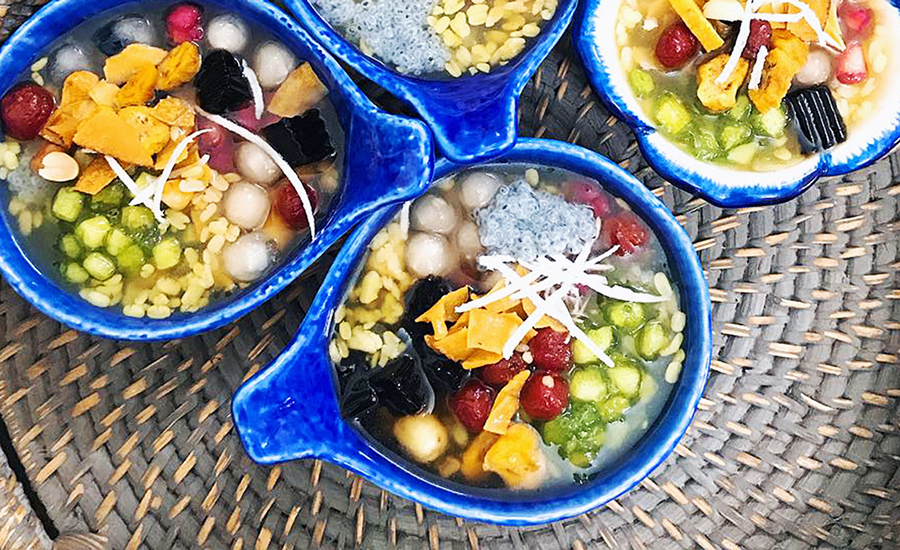
What to buy as a gift?
Lanterns are a gift associated with Hoi An. You should look to buy at large stores that both make and sell, to have a variety of choices in styles, sizes and materials.
Bronze statues are sold everywhere in the old town, priced from 130,000 to 350,000 VND depending on size. These are all products of the famous Phuoc Kieu bronze casting village in Hoi An.
To he is a product from Thanh Ha pottery village, Hoi An. There are no diverse designs but this is still a popular souvenir because of its cheap price, about 5,000 VND.
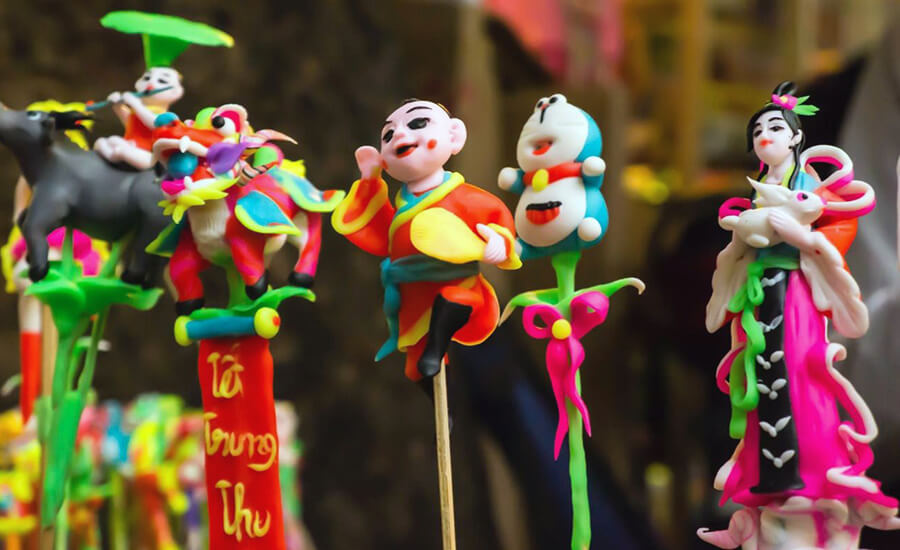
to he
Hoi An craft village is also famous for its wood carvings. The artisans all come from Kim Bong carpentry village, some of them open workshops directly in the old town. The price of an item ranges from 120,000 to 300,000 VND.
Hoi An silk is airy, light and soft. In addition to available clothes, bags, and towels, you can order a super-fast tailor with your own design and receive it back in just one day. The average price of a silk scarf is 150,000 VND.
Source: collected by An
